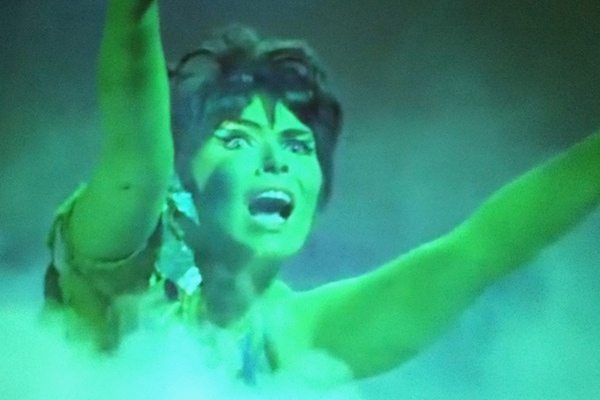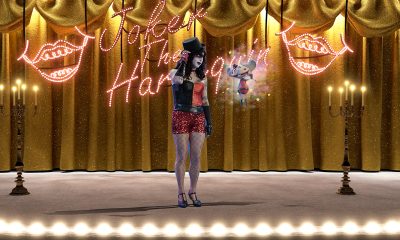a&e features
Holy spandex tights! It’s Batgirl!
Nearly 50 years later, Yvonne Craig reflects on ‘Batman,’ ‘Star Trek,’ Elvis and more
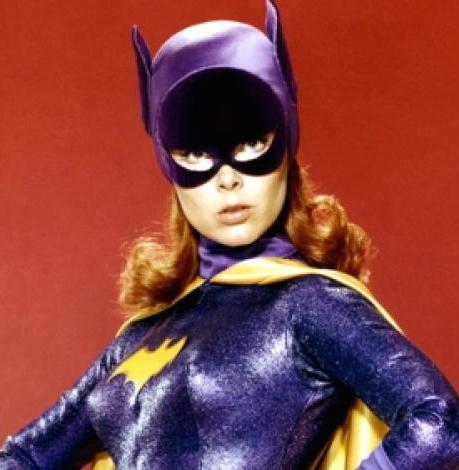
Sometimes indelible pop culture impressions are made in a very short time. Yvonne Craig played Batgirl for just one season — the third and final — of the 1966-’68 TV series “Batman,” yet it’s the role she’s best known for nearly 50 years later.
And although the character appeared once on the big screen (in the oft-derided 1997 movie “Batman & Robin” in which she was portrayed by Alicia Silverstone), it is Craig, by far, who is most identified with the role.
Craig, 77, was a steadily working actress throughout the 1960s and beyond racking up appearances on “Perry Mason,” “The Barbara Stanwyck Show,” “My Three Sons,” “The Many Loves of Dobie Gillis” and — donning head-to-toe green body paint — as Marta, an Orion slave girl, in the classic “Star Trek” episode “Whom Gods Destroy.” She also played opposite Elvis Presley in two feature films — “It Happened at the World’s Fair” (1963) and “Kissin’ Cousins” (1964). She was brought on “Batman” for the 1967-’68 season to play Commissioner Gordon’s librarian daughter Barbara whose alter ego Batgirl could be counted on to ward off villains with Batman (Adam West) and Robin (Burt Ward).
After years of legal wrangling, the series was finally released on DVD and Blu-ray last November. That was our initial peg for reaching out to Craig, but several delays including gall bladder surgery for the otherwise-healthy actress, pushed things back. We spoke to her by phone from her Los Angeles home two weeks ago. Quick to laugh and always ready to launch into a funny anecdote, Craig — who’s straight and happily married — was willing to indulge any inquiry. Her comments have been edited for length.
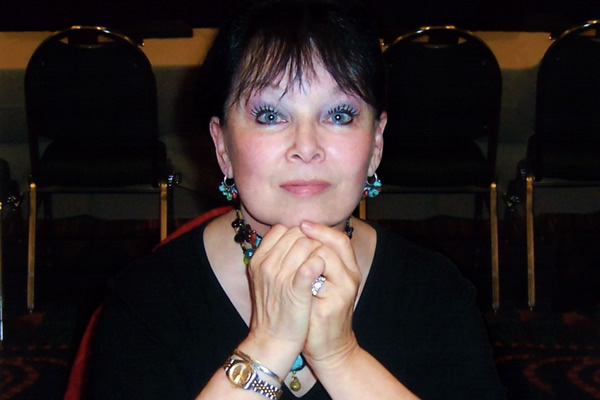
Yvonne Craig says she enjoys meeting fans though she has rarely watched ‘Batman’ or ‘Star Trek’ since their original broadcasts. (Photo courtesy Craig)
WASHINGTON BLADE: Have you lived most of your adult life in Los Angeles?
YVONNE CRAIG: Yes. We moved up to Nevada, to south Lake Tahoe, about three years ago and we moved back last year and I’m so grateful to be back. You can only look at so many trees and eventually you say, “Where’s the classical music? Where’s the ballet company? Where’s the art museum?” Well, they’re not there.
BLADE: Let’s start with “Star Trek.” Sci-fi fans in general are often so ardent and you had such a major role on one of the most famous episodes of the iconic original series yet I’m sure for you at the time, it was just another job. What’s it like when you meet fans and they assume you’re going to be a walking encyclopedia of “Star Trek” ephemera?
CRAIG: Well, it’s been lovely for me and I loved the part. I did a convention where a young woman came up to my room to walk me down to where I was supposed to do a Q&A and I said to her, “There are so many weird people here,” and she said, “We’re all weird, we’re all misfits and the reason we like this is because we can all get together and understand one another and it’s the only place we’re really accepted by our peers.” And I thought, “Wow, that’s really insightful.” … I’ve always liked the fans and they’ve been charming to me. It’s just when they come up and say to me, “Do you remember the third rock on the left in the such and such,” and I say to them, “You know what? I’ve only seen two ‘Star Treks.’ One was mine and the other was ‘The Trouble with Tribbles,’” you know, the furry little things. (I’m told) “Whom Gods Destroy” is the second most popular episode after “Trouble with Tribbles.”
BLADE: Was it hard to relax between takes with the green body paint?
CRAIG: No, but getting it off at night was a disaster. I started with a shower at the studio, then I had to go home and take an oil bath, then take another shower. I think if I were doing it today, I would have just slept very carefully somewhere at the studio.
BLADE: Aren’t you glad you didn’t have to play her for several seasons?
CRAIG: Oh, wouldn’t that be horrible? We also had trouble making it stick during the day. We were at our wits’ end and it’s like the fourth day and finally … we found a makeup guy who could make it stick. He wasn’t really supposed to do it because at the time male makeup artists were not allowed to put body makeup on women, but I didn’t care. We brought him in and sure enough, he did the last two days and it never moved. It was great but we never told because he could have been fired. It’s so sexist I can’t believe it.
BLADE: Have you followed the various “Batman” film adaptations over the years? Do you have much interest in that?
CRAIG: Yes, I do. I liked Michael Keaton. I just loved him but in the second one, he got stuck with the Penguin and it had, like, six endings. You think it’s over and the Penguin is gone and he would come back spitting ink again. So I just knew immediately why when Michael Keaton said he’s not doing anymore, I knew immediately why. Who wants to be second banana to a penguin? … I thought George Clooney was just going to be terrific … and I thought Chris O’Donnell … would be a good match … then you get to the movie and it’s just awful. I don’t know what was going on, if George Clooney was just doing too many things at the same time so he didn’t think this out or something. Every time they mentioned that Alfred was ill, no Alfred isn’t just sick, Alfred is going to die, he just had this smirk. I’m like, “What’s funny about that? This is the man who brought you up, what is going on?” And then Chris O’Donnell just kept whining about a car and I thought, “God, I hate this movie.” I actually thought Alicia Silverstone would just be darling as Batgirl and I wrote her a note and said, “You’ll just knock ‘em dead.” … First of all, they made her whole relationship she was Alfred’s niece or something instead of Commissioner’s daughter, which was screwy, then they put them all in these Robocop outfits so they couldn’t even move, it was horrible. I didn’t like Val Kilmer but once they got Christian Bale, I loved it. I mean I really like him. He’s an excellent actor. So yeah, I keep up with them.
BLADE: They’ve gotten so dark. Why?
CRAIG: Well, when we first started there were people who remembered the (serial) films from the 1940s or whenever they did them and that was dark. So I think they are kind of of their time. We were busy being hippies and throwing flowers and love and peace and all of that and people were offended. They said, “This isn’t what Batman should be.” Those were the diehard ones. Now they’re all dead because it was a long time ago. The one with Michael Keaton, I thought was pretty dark and a couple of times you couldn’t see who was fighting whom, so you weren’t invested. If you can’t see who the villains are and who the good guys are, you lost interest. Then they got lighter for a while but our times have changed. I think we’re going back to dark because these are darker times. We have drive-by shootings and terrorists with no conscience. So I don’t know what the next thing might look like but I bet it will be scary.
BLADE: I guess “Batman v. Superman” (slated for 2016 release) is next.
CRAIG: Oh is it? Well, I may have to see that one.
BLADE: Should Batgirl be in it too? Do you feel any investment in these things as you hear of them?
CRAIG: No. I loved doing the role. I liked the way the writers wrote her. When people come up and say she was a role model, I always think, “Wow, I wish I had one of the writers next to me to hear this” because they’re really the ones who wrote this. Everybody forgets that the actor can only do anything with what they’re given. Writers never get the esteem they should have.
BLADE: Yes, but so many of the actors on the ‘60s show really became synonymous with the parts. When we think of the Riddler, we think of Frank Gorshin, we think of Cesar Romero (the Joker), we think of you as Batgirl and of Julie Newmar and Eartha Kitt as Catwoman. Why did that series have such impact?
CRAIG: Well it was a top-rated show and nothing had ever been seen before that looked quite like that. It was really a comic book that was live action so you saw “bam” and “pop” and all of those things you saw in a comic book. The colors were brilliant and they had this crazy thing where when the villain entered the camera was tilted. So it was innovative and unique for its time. There were a lot of things only the adults would have understood, double entendres, … yet it was safe to watch with kids because it wasn’t violent. You’re not seeing body parts and blood and guts and people shoot one another. … As far as being attached, I was only in the third season and I had a body of work before and I didn’t have a problem at all doing other things. I think Adam (West) was a whole other story because he has a very distinctive speech cadence. (Imitates West) “That’s just the way he talked — (pauses) — citizens.” When he’d go read for other parts, they just thought he was doing Batman so he had a hard time getting hired. … Now he’s doing voiceovers and it’s working for him again and I like that. He’s a nice man.
BLADE: Was the costume stretchy?
CRAIG: It was. I was used to being in leotards, so it was perfect for me. … It was easy to work in, easy to get in and out of and I did stunts, so it was easy to dance in, kick in and all those things. I had no problem with it. Lee Meriwether (Catwoman briefly in 1966) and I were on a panel together once and she said that was the most uncomfortable costume she has ever worn and it was kind of the same as mine, that same stretch fabric. I think it just has to do with whether you were used to wearing leotards or not and I was.
BLADE: Did you keep anything, the costume or any props or anything?
CRAIG: No, because it didn’t belong to me.
BLADE: That was your own hair as Barbara?
CRAIG: Yes. I told them I didn’t mind being a redhead as long as it was a wig, which it was and you saw it very prominently displayed in her secret room. A friend of mine at the time wanted to set me up with this guy. I was single then. She told him, “She plays Batgirl.” And he said, “Oh, well I like the little brunette better.” And I thought, “Oh he’s too dumb to go out with.”
BLADE: Was it a fairly chummy set?
CRAIG: Oh yes, the happiest set I’d been on since “Mod Squad.” … It was terrific. The cast liked one another, the crew liked one another and we all loved having all of these people on we’d never have worked with otherwise. I never would have worked with Milton Berle or Ethel Merman (otherwise). And they all loved it too because it was so different from anything else they’d ever done. It was a happy place to go to work every day.
BLADE: Burt’s (Robin) memoir was quite interesting.
CRAIG: Yes. I think he had a very vivid fantasy life.
BLADE: His (“Boy Wonder: My Life in Tights”) was quite different from yours (“From Ballet to the Batcave and Beyond”).
CRAIG: It was. He had asked me to write the foreword for his. I said sure, send it to me. He never did. He’d call and read me funny things and finally we were getting tight on time. I was leaving the country and he said he needed it so I sent him something that said, “I have not read this book.” (“Batman” writer) Stanley Ralph Ross said, “You can’t write a foreword to a book you haven’t read,” so I read the book and it was just relentlessly sexual. Even if it were true and it wasn’t, nobody wants to think of their little Robin as this voracious satyr. … I know there are different takes on things, but I can tell you truly in the third season, nothing happened on that set, nothing. And I can almost guarantee you nothing happened the first two seasons either. Now what they did when they were out on the road, I have no idea but as far as it happening on the set — he claimed he was behind scenery — but we were there working, they had somebody building on the next set we were going to use and we had stunt people, including me, off in a corner trying to figure out the fight scene. We shot those in three days. I mean it was just gangbusters, go! So I don’t know where he found the space or the time and I never saw any of it. … Plus we had children visiting the set almost every day.
BLADE: Would you have continued on another three or four seasons had it been renewed?
CRAIG: I would have. I loved doing it.
BLADE: How far into the season were you when you heard it wasn’t being renewed?
CRAIG: We had a wrap party for the third season and we all went home thinking we would be picked up and only when it was time to start shooting again did I hear we weren’t. So we never really had an over party. We just went home for Thanksgiving or Christmas or one of those and we didn’t know. And of course, we didn’t know 50 years later people were still going to be talking about it. We just said, “OK, on to the next job. What else do you have lined up for me?” because that’s the way the business runs.
BLADE: Alan Napier (Alfred) said once that Eartha Kitt (Catwoman on the third season) was “kind of marvelous” but complained a lot on the set. Agree?
CRAIG: I don’t know. In the scenes I had with her, she wasn’t complaining at all. She was a woman, oh boy, who was I would say rather conflicted and very insecure so who knows, she might have complained and he might have heard her or he might have had more down time sitting with her than I did because usually when I wasn’t shooting, I was off with the stunt people. But no. One time we did some kind of reunion-type thing and my husband was excited to meet her and she was just so nervous about doing this, I don’t know, it was like a talk show or something. And she said, “I’m sorry, I can’t meet him, I can’t meet anyone, I have to get myself together for this.” And I thought, “How strange — this is just a talk show.” But you know, her background was not wonderful. I can see it. You’re black, you’re in America, you purportedly said something not very nice to the first lady (Lady Bird Johnson). I didn’t see anything wrong with what she said, she was just asking a question. But you know, it probably adds up.
BLADE: I know you didn’t work with Julie Newmar (Catwoman, first two seasons) on the show but you’ve made appearances with her at various events since then. Have you gotten to know her at all?
CRAIG: Not really. At the conventions she’s done, she always arrives late but she has a great work ethic. Somebody said to her one day, “OK, Julie, so when you get up, what do you do?” And she said (slipping into Newmar’s purry voice) “Well — pauses — I put on a little makeup — pauses — and then I have some coffee …” And I figured, “OK, well, that’s why she’s always late,” but I’ll tell you what, she’s wonderful with the fans and she will stay until the last person sees her. There are a lot I could mention who don’t do that, so I think she and I have the best work ethic of the group.
BLADE: It was obviously such intentional camp. You seemed to play it very earnestly. Was it hard to find the right tone with the material?
CRAIG: No. I played it completely straight and that’s the clue. I think if the material is completely over the top, you play it straight and that makes it funny for the audience. If you play it with a wink, then it isn’t funny. This tends to happen a lot with child actors.
BLADE: Were you happy to see it finally released?
CRAIG: Yes. We don’t get any residuals or anything because, of course, there was no such thing as DVDs back then. I probably won’t watch it, but I’m glad to see it out. I live in the present and I don’t look back other than to say, “Well, that was a wonderful experience,” and if it weren’t a wonderful experience, as in the case of, say, Bill Shatner (Kirk on “Star Trek”), who I don’t think ever allowed anyone to have a wonderful experience with his acting, I just feel we only have a certain amount of time and I don’t want to spend it looking back.
BLADE: I saw a photo not long ago of you with Bill Bixby (“The Incredible Hulk”) and you were in a bathing suit. What was that from?
CRAIG: We were on “Courtship of Eddie’s Father” and “My Favorite Martian” together but I was never in a bathing suit. In those days, God, I sound like such a codger, they had Photoplay and these fan magazines, so they would set up these photo shoots. One time Adam took me out on his boat and we took pictures but it was just for photos, I had never been on his boat before or after.
BLADE: But you and Bill were friendly?
CRAIG: We dated! … We remained friends, but it just wasn’t a good match.
BLADE: They kept casting you as different girlfriends of Dobie Gillis. Did that seem odd to you at the time?
CRAIG: I don’t remember thinking that. I think I just thought, “Oh, I get to play somebody new.” Dwayne Hickman (Dobie) still cracks me up. My husband doesn’t understand it. He looks at me and says, “He’s not that funny,” and I just say, “To me, he is.” It’s like George Burns or Jack Benny. All I have to do is look at Dwayne and I laugh. I did four “Dobies,” I think. It’s really weird when I tell people who all I worked with. Once I even worked with (silent screen legend) Francis X. Bushman on (“Dobie” episode) “The Flying Millicans.” He played my father. He had this long gray hair and we were trapeze artists. To think that I actually worked with somebody who was in silent films!
BLADE: Lynda Carter said once that DC Comics reached out to her when they were going to change the Wonder Woman costume. Have they ever lent you any sort of Batgirl emeritus status or consulted you on anything over the years?
CRAIG: No, not at all.
BLADE: Both “Star Trek” and “Batman” were modest hits during their original runs but went crazy in syndication and ran forever. Any theories on why?
CRAIG: I honestly couldn’t tell you. I haven’t the foggiest idea. We only went three seasons and we were a mid-season replacement so it wasn’t even like they were long seasons. Some of those Westerns went on for like 22 years or something crazy.
BLADE: Like “Gunsmoke.”
CRAIG: Yes. And I hated doing Westerns.
BLADE: Did you do many?
CRAIG: Oh yeah, a whole slew of ‘em. “Wagon Train,” “Bronco.” As long as the horse hits his mark, they don’t care what you say. They figure, “OK, the horse is in place, she’s up there, we can always loop it.” It’s all predicated on a horse.
BLADE: Do you see any homoerotic subtext in Batman and Robin, either on the show or in any other incarnation?
CRAIG: I never really felt there was. I think a lot of people who were reading into that were not gay. It’s the homophobes who would say, “You know, an older man, I bet he’s diddling that kid.” People who do not understand homosexuality at all.
BLADE: Did you have a favorite villain?
CRAIG: Oh yes, Vincent Price (Egghead). Not because of the villainy, but any time you had down time with Vince Price, he was just wonderful. He was bright, he was curious, he had a great sense of humor, he knew a lot about art, he knew a lot about ballet. He was just very well informed and you knew he kept up.
BLADE: Did you know he was gay at the time?
CRAIG: Yes.
BLADE: How did you feel when you heard Elvis had died?
CRAIG: Oh dear. Well first, he was just the sweetest man. He was so polite and he took all this unsolicited advice from me, what he should do with his hair, crazy stuff like that. … When he died, the Dallas Morning News called me up, I was seeing my future husband at the time, and this reporter said (slipping into exaggerated Southern accent), “How did you feel when Elvis died, were you just devastated?” I said, “Well, no, because I think dead is really a thing just like alive except you have less choices to make.” And there was this dead silence. Finally she said, (returning to accent), “OK, well thank you very much.” He said to me, “Nobody understands what you mean when you say that,” and I just said, “Well, that’s her problem.” I was sorry he died so young. There’s a group up in San Francisco that are just huge Elvis fans. They have his leading ladies up to talk and I’ve been there and then they have an impersonator come out. When I was there, it was Elvis Herselvis, this rather fat, gay woman. She does a wonderful job.
BLADE: Have you kept much career memorabilia?
CRAIG: No, nothing. When I did the book, all the photos were from fans who’d sent them to me at one time or another. When Capital Cities bought ABC, they sent me a whole stack of pictures they were just going to otherwise throw away and said, “Do you want them?” But that was it. I don’t keep stuff. I probably don’t have much of a sentimental bone in my body.
a&e features
Peppermint thrives in the spotlight
In exclusive interview, she talks Netflix show — and the need to resist Trump’s attacks
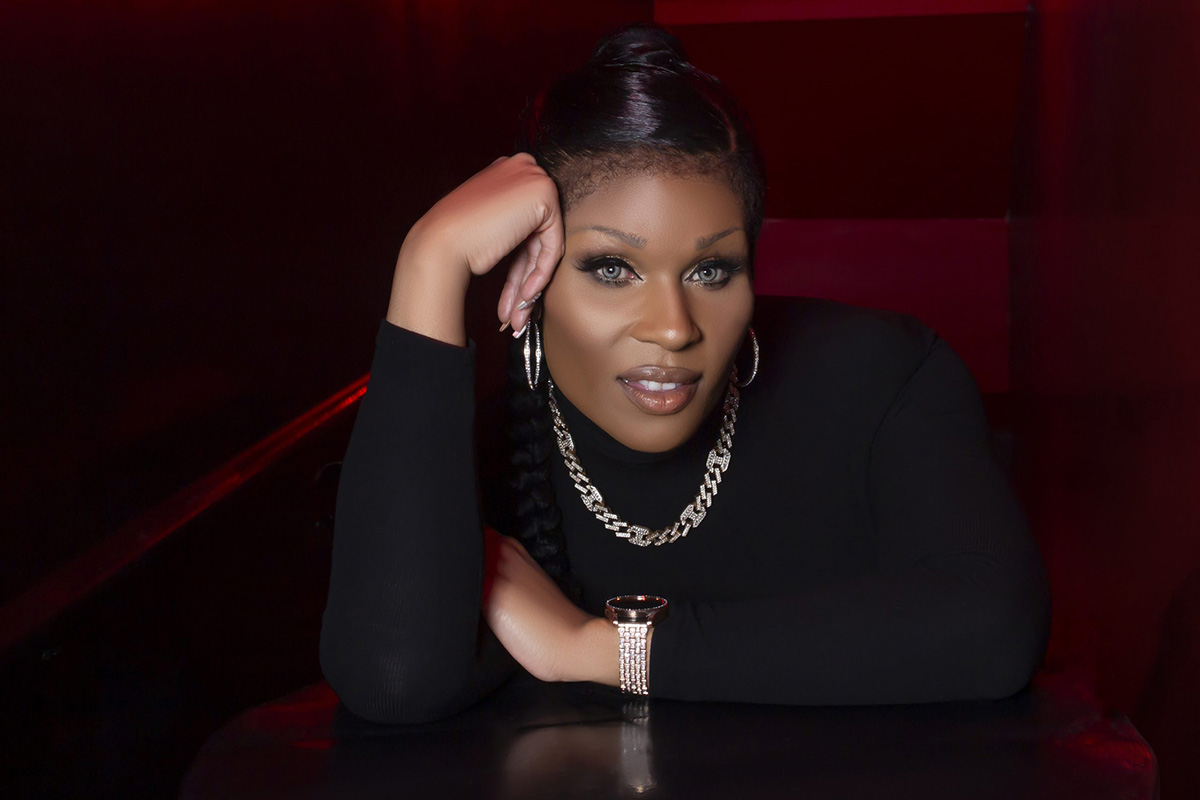
As an entertainer, there’s not much that Peppermint hasn’t done. She’s a singer, actor, songwriter, reality TV personality, drag queen, podcaster and the list goes on. Most importantly, as an activist she has been an invaluable role model for the trans, queer, and Black communities.
She’s a trailblazer who boasts an impressive list of ‘firsts.’ She is the first out trans contestant to be cast on “RuPaul’s Drag Race” (Season 9). She is the first trans woman to originate a principal musical role for Broadway’s “Head Over Heels.” She was also the first trans woman to compete in the runaway hit series “Traitors,” on Peacock, and she is the ACLU’s first-ever Artist Ambassador for Trans Justice. Her accolades are a true testament of the courage it took for Peppermint to live her authentic self.
We caught up with Peppermint to chat about her activism, taking on bigger roles on screen, our current political and social climate and life beyond the lens. For Peppermint, coming out as trans was not just a moment of strength—it was a necessity.
“It unfolded exactly as I had imagined it in terms of just feeling good and secure about who I am. I was in so much pain and sort of misery and anguish because I wasn’t able to live as free as I wanted to and that I knew that other people do when they just wake up. They get dressed, they walk out the door and they live their lives. Being able to live as your authentic self without fear of being persecuted by other people or by the government is essential to being healthy,” Peppermint tells the Blade in an exclusive interview.
“I was not able to imagine any other life. I remember saying to myself, ‘If I can’t imagine a life where I’m out and free and feeling secure and confident and left alone, then I don’t even want to imagine any kind of a life in the future,’” says Peppermint.
Recently, Peppermint returned for season 2 of Netflix’s comedy “Survival of the Thickest.” She added some spice and kick to the first season in her role as a drag bar owner. This time around, her character moves center stage, as her engagement and wedding become a major plot line in the show. Her expanded role and high-profile trans representation come at just the right time.
“It’s the largest acting role I’ve ever had in a television show, which my acting degree thanks me. It feels right on time, in a day where they’re rolling back trans rights and wanting to reduce DEI and make sure that we are limited from encouraging companies, corporations, industries, and institutions from not only featuring us, but supporting us, or even talking about us, or even referencing us.
“It feels great to have something that we can offer up as resistance. You can try to moralize, but it’s tougher to legislate art. So it feels like this is right on time and I’m just really grateful that they gave me a chance and that they gave my character a chance to tell a greater story.
Peppermint’s expanded role also accompanies a boom in queer representation in Black-powered media. Networks like BET and Starz and producers like Tyler Perry, are now regularly showcasing queer Black folks in main story lines. What does Peppermint think is fueling this increased inclusion?
“Queer folks are not new and queer Black folks are not new and Black folks know that. Every Black person knows at least one person who is queer. We are everywhere. We have not always been at the forefront in a lot of storytelling, that’s true, and that’s the part that’s new. It’s Hollywood taking us from the place where they usually have held us Black, queer folks in the makeup room, or as the prostitute, as an extra—not that there’s anything wrong with sex work or playing a background performer. I’ve played the best of the hookers! But those [roles] are very limiting.
“Hollywood has not historically done and still does not do a very good job of, including the voices of the stories that they make money [on]. And I think they’re realizing [the need] to be inclusive of our stories and our experiences, because for a long time it was just our stories without our actual experiences. It’s also exciting. It’s dramatic. It makes money. And they’re seeing that. So I think they’re just dipping their toes in. I think that they’re going to realize that balance means having us there in the room.”
Peppermint’s activism is tireless. She has raised more than six figures for prominent LGBTQ rights groups, she continues to speak around the nation, appears regularly on major media outlets addressing trans and LGBTQ issues and has been honored by GLAAD, World of Wonder, Out magazine, Variety, Condé Nast and more—all while appearing on screen and onstage in a long list of credits.
Now, under the Trump administration, she doesn’t have time to take a breath.
“I wouldn’t be able to do it if it weren’t second nature for me. Of course, there are ups and downs with being involved with any social issue or conversation and politics. But I am, for now, energized by it. It’s not like I’m energized by like, ‘Ooh, I just love this subject!’ right? It’s like, ‘Oh, we’re still being discriminated against, we gotta go and fight.’
“That’s just what it is. I get energy because I feel like we are quite literally fighting for our lives. I know that is hyperbole in some regards, but they are limiting access to things like housing, healthcare, job security and not having identification. Passport regulations are being put in a blender.”
Peppermint also mentions her thoughts on the unfair mandates to remove trans service members and revoke the rights and resources from the veterans who worked their whole lives to fight for this country.
“When you strip all these things away, it makes it really difficult for people to have a life and I know that that is what they’re doing. When I look around and see that that is what is at stake, I certainly feel like I’m fighting for my life. And that’s energizing.
“The only thing that would be the most rewarding besides waking up in a utopia and suddenly we’re all equal and we’re not discriminating against each other—which probably is not happening this year—is to be able to be involved in a project like this, where we can create that world. It’s also being built by people who are a part of that story in real life and care about it in real life.”
Peppermint is clear on her point that now is the time for all of the letters of the LGBTQ community to come together. Everyone who is trans and queer should be joining the fight against the issues that affect us all.
“Just trust us and understand that our experiences are tied together. That is how and why we are discriminated against in the way[s] that we are. The people who discriminate—just like how they can’t really distinguish between somebody who’s Dominican and somebody who’s African American — you’re Black when you’re getting pulled over. We are discriminated against in much the same way. It’s the same with being trans or queer or gender non-conforming or bi, we all have our own experiences and they should be honored.
“When laws are being created to harm us, we need to band together, because none of y’all asses is gonna be able to stop them from getting rid of marriage equality—which is next. If you roll the tape back to three years ago when somebody was trying to ask me about drag queen bans on readings in school, I was saying they’re coming for trans rights, which comes for bodily autonomy and abortion rights, which comes for gay marriage rights. Those three things will be wiped out.
Peppermint doesn’t take a pause to get fired up and call gay folk out in their obligation to return the favor to the Black trans community.
She shares with us her final thoughts.
“You cis-gender homosexuals need to stand the fuck up and understand that we are standing in front of you. It’s very difficult to understand this and know this, but so many of the rights that we have were hard fought and won by protest and by people fighting very hard for them. And many of those people in every single instance from the suffrage movement, obviously Civil Rights, queer rights, the AIDS and HIV movement—Black queer people have been there the entire time. Trans people have always been a part of that story, including Stonewall. Yes, we are using different terminology. Yes, we have different lenses to view things through, but let me tell you, if you allow us to be sacrificed before you see us go off the side, you will realize that your foot is shackled to our left foot. So, you better stand the fuck up!”
Peppermint for president!
a&e features
Tristan Schukraft on keeping queer spaces thriving
New owner of LA’s Abbey expands holdings to Fire Island, Mexico
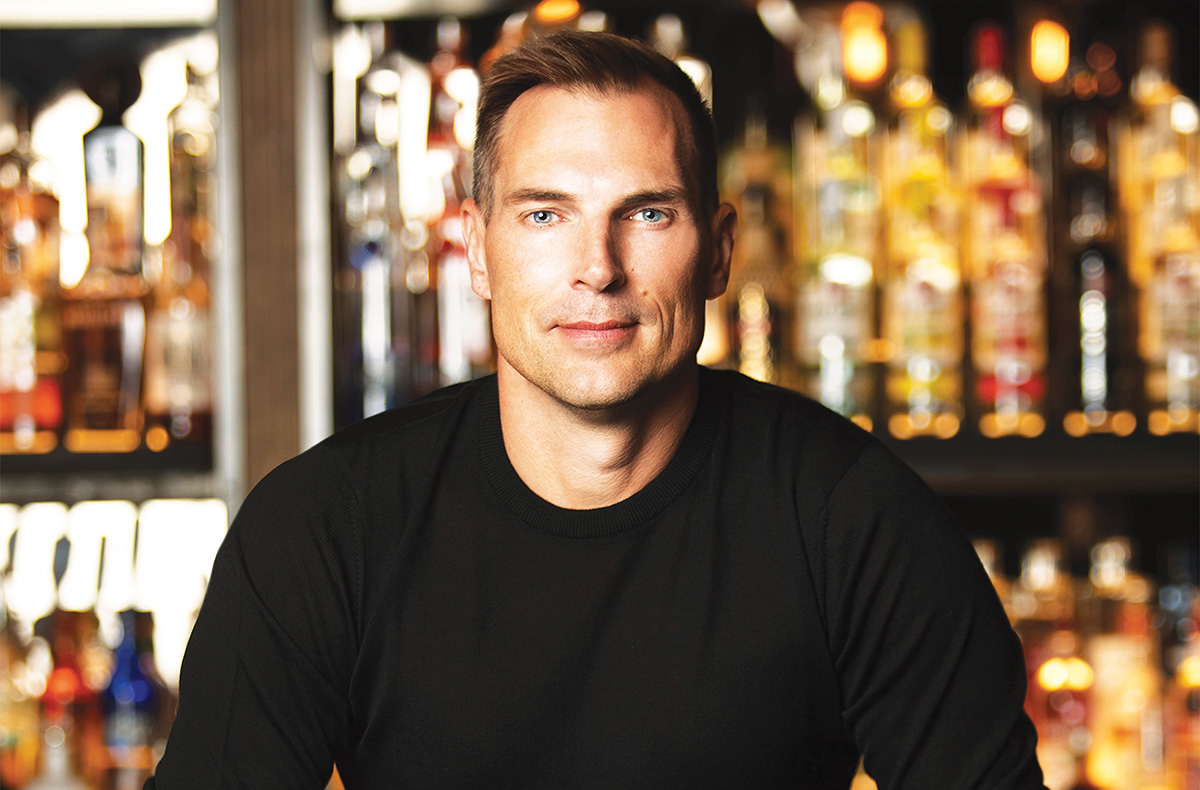
LOS ANGELES — Like the chatter about Willy Wonka and his Chocolate Factory, the West Hollywood community here started to whisper about the man who was going to be taking over the world-famous Abbey, a landmark in Los Angeles’s queer nightlife scene. Rumors were put to rest when it was announced that entrepreneur Tristan Schukraft would be taking over the legacy created by Abbey founder David Cooley. All eyes are on him.
For those of us who were there for the re-opening of The Abbey, when the torch was officially passed, all qualms about the new regime went away as it was clear the club was in good hands and that the spirit behind the Abbey would forge on. Cher, Ricky Martin, Bianca del Rio, Jean Smart, and many other celebrities rubbed shoulders with veteran patrons, and the evening was magical and a throwback to the nightclub atmosphere pre-COVID.
The much-talked-about purchase of the Abbey was just the beginning for Schukraft. It was also announced that this business impresario was set to purchase the commercial district of Fire Island, as well as projects launching in Mexico and Puerto Rico. What was he up to? Tristan sat down with the Blade to chat about it all.
“We’re at a time right now when the last generation of LGBT entrepreneurs and founders are all in their 60s and they’re retiring. And if somebody doesn’t come in and buy these places, we’re going to lose our queer spaces.”
Tristan wasn’t looking for more projects, but he recounts what happened in Puerto Rico. The Atlantic Beach Hotel was the gay destination spot and the place to party on Sundays, facing the gay beach. A new owner came in and made it a straight hotel, effectively taking away a place of fellowship and history for the queer community. Thankfully, the property is gay again, now branded as the Tryst and part of Schukraft’s portfolio with locations in Puerto Vallarta and Fire Island.
“If that happens with the Abbey and West Hollywood, it’s like Bloomingdale’s in a mall. It’s kind of like a domino effect. So that’s really what it is all about for me at this point. It has become a passion project, and I think now more than ever, it’s really important.”
Tristan is fortifying spaces for the queer community at a time when the current administration is trying to silence the LGBTQ+ community. The timing is not lost on him.
“I thought my mission was important before, and in the last couple of months, it’s become even more important. I don’t know why there’s this effort to erase us from public life, but we’ve always been here. We’re going to continue to be here, and it brings even more energy and motivation for me to make sure the spaces that I have now and even additional venues are protected going in the future.”
The gay community is not always welcoming to fresh faces and new ideas. Schukraft’s takeover of the Abbey and Fire Island has not come without criticism. Who is this man, and how dare he create a monopoly? As Schukraft knows, there will always be mean girls ready to talk. In his eyes, if someone can come in and preserve and advance spaces for the queer community, why would we oppose that?
“I think the community should be really appreciative. We, as a community, now, more than ever, should stand together in solidarity and not pick each other apart.”
As far as the Abbey is concerned, Schukraft is excited about the changes to come. Being a perfectionist, he wants everything to be aligned, clean, and streamlined. There will be changes made to the DJ and dance booth, making way for a long list of celebrity pop-ups and performances. But his promise to the community is that it will continue to be the place to be, a place for the community to come together, for at least another 33 years.
“We’re going to build on the Abbey’s rich heritage as not only a place to go at night and party but a place to go in the afternoon and have lunch. That’s what David Cooley did that no others did before, is he brought the gay bar outside, and I love that.”
Even with talk of a possible decline in West Hollywood’s nightlife, Schukraft maintains that though the industry may have its challenges, especially since COVID, the Abbey and nightlife will continue to thrive and grow.
“I’m really encouraged by all the new ownership in [nightlife] because we need another generation to continue on. I’d be more concerned if everybody was still in their sixties and not letting go.”
In his opinion, apps like Grindr have not killed nightlife.
“Sometimes you like to order out, and sometimes you like to go out, and sometimes you like to order in, right? There’s nothing that really replaces that real human interaction, and more importantly, as we know, a lot of times our family is our friends, they’re our adopted family.
Sometimes you meet them online, but you really meet them going out to bars and meeting like-minded people. At the Abbey, every now and then, there’s that person who’s kind of building up that courage to go inside and has no wingman, doesn’t have any gay friends. So it’s really important that these spaces are fun, to eat, drink, and party. But they’re really important for the next generation to find their true identity and their new family.”
There has also been criticism that West Hollywood has become elitist and not accessible to everyone in the community. Schukraft believes otherwise. West Hollywood is a varied part of queer nightlife as a whole.
“West Hollywood used to be the only gay neighborhood, and now you’ve got Silver Lake and you’ve got parts of Downtown, which is really good because L.A., is a huge place. It’s nice to have different neighborhoods, and each offers its own flavor and personality.”
Staunch in his belief in his many projects, he is not afraid to talk about hot topics in the community, especially as they pertain to the Abbey. As anyone who goes to the Abbey on a busy night can attest to, the crowd is very diverse and inclusive. Some in the community have started to complain that gay bars are no longer for the gay community, but are succumbing to our straight visitors.
Schukraft explains: “We’re a victim of our own success. I think it’s great that we don’t need to hide in the dark shadows or in a hole-in-the-wall gay bar. I’m happy about the acceptance. I started Tryst Hotels, which is the first gay hotel. We’re not hetero-friendly, we’re not gay-friendly. We’re a gay hotel and everyone is welcome. I think as long as we don’t change our behavior or the environment in general at the Abbey, and if you want to party with us, the more than merrier.”
Schukraft’s message to the community?
“These are kind of dangerous times, right? The rights that we fought for are being taken away and are being challenged. We’re trying to be erased from public life. There could be mean girls, but we, as a community, need to stick together and unite, and make sure those protections and our identity aren’t erased. And even though you’re having a drink at a gay bar, and it seems insignificant, you’re supporting gay businesses and places for the next generation.”
a&e features
Creator Max Mutchnick on inspirations for ‘Mid-Century Modern’
Real-life friendships and loss inform plot of new Hulu show
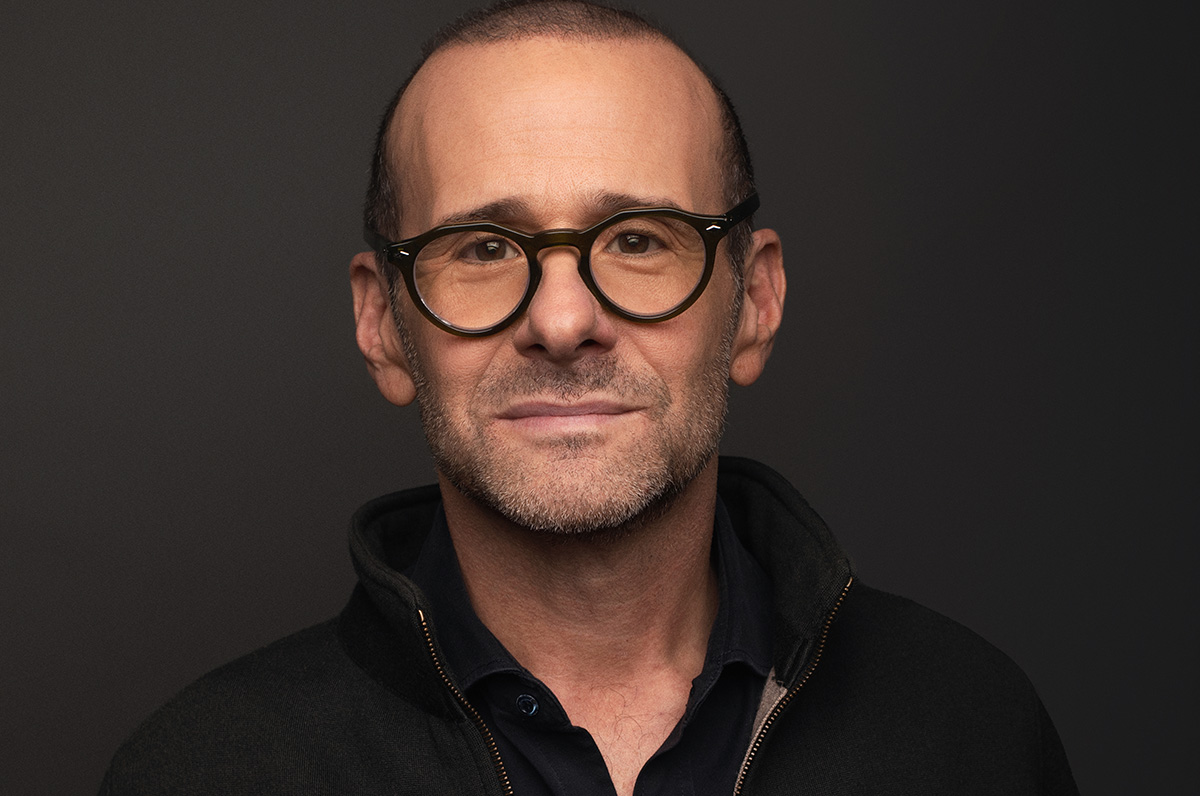
It’s been a long time – maybe 25 years when “Will & Grace” debuted – since there’s been so much excitement about a new, queer sitcom premiering. “Mid-Century Modern,” which debuted on Hulu last week, is the creation of Max Mutchnick and David Kohan, the gay men who were also behind “Will & Grace.”
Set in Palm Springs, Calif., following the death of the one of their closest friends, three gay men gather to mourn. Swept up in the emotions of the moment, Bunny (Nathan Lane) suggests that Atlanta-based flight attendant Jerry (Matt Bomer) and New York-based fashion editor Arthur (Nathan Lee Graham) move into the mid-century modern home he shares with his mother Sybil (the late Linda Lavin). Over the course of the first season’s 10 episodes, hilarity ensues. That is, except for the episode in which they address Sybil’s passing. The three male leads are all fabulous, and the ensemble cast, including Pamela Adlon as Bunny’s sister Mindy, and the stellar line-up of guest stars, such as Jesse Tyler Ferguson, Vanessa Bayer, Richard Kind, and Cheri Oteri, keep humor buzzing. Shortly before the premiere of “Mid-Century Modern,” Mutchnick made time for an interview with the Blade.
BLADE: I’d like to begin by saying it’s always a delight to speak to a fellow Emerson College alum. In ways would you say that Emerson impacted your professional and creative life?
MAX MUTCHNICK: I think Emerson was the first place that reflected back to me that my voice, my thoughts were good, and they were worth listening to. I developed a confidence at Emerson that did not exist in my body and soul. It was a collection of a lot of things that took place in Boston, but I mean we can just put it all under the Emerson umbrella.
BLADE: Before “Will & Grace,” you co-created the NBC sitcom “Boston Common,” which starred fellow Emerson alum Anthony Clark. Is it important for you to maintain those kinds of alumni relationships?
MUTCHNICK: Because Emersonians are such scrappy little monkeys and they end up being everywhere in the world, you can’t help but work with someone from Emerson at some point in your career. I’m certainly more inclined to engage with someone from Emerson once I learn that they went to my alma mater. For me, it has much more to do with history and loyalty. I don’t think of myself as one of those guys that says, “Loyalty means a lot to me. I’m someone that really leans into history.” It’s just what my life and career turned out to be. The longer I worked with people and the more often I worked with them, the safer that I felt, which means that I was more creative and that’s the name of the game. I’ve got to be as comfortable as possible so I can be as creative as possible. If that means that a person from Emerson is in the room, so be it. (Costume designer) Lori Eskowitz would be the Emerson version. And then (writer and actor) Dan Bucatinsky would be another version. When I’m around them for a long time, that’s when the best stuff comes.
BLADE: Relationships are important. On that subject, your new Hulu sitcom “Mid-Century Modern” is about the longstanding friendship among three friends, Bunny (Nathan Lane), Jerry (Matt Bomer), and Arthur (Nathan Lee Graham). Do you have a friendship like the one shared by these three men?
MUTCHNICK: I’m absolutely engaged in a real version of what we’re projecting on the show. I have that in my life. I cannot say that I’m Jerry in any way, but the one thing that we do have in common is that in my group, I’m the young one. But I think that that’s very common in these families that we create. There’s usually a young one. Our culture is built on learning from our elders. I didn’t have a father growing up, so maybe that made me that much more inclined to seek out older, wiser, funnier, meaner friends. I mean the reason why you’re looking at a mouthful of straight, white teeth is because one of those old bitches sat across from me about 25 years ago at a diner and said, “Girl, your teeth are a disaster, and you need to get that fixed immediately.” What did I know? I was just a kid from Chicago with two nickels in my pocket. But I found three nickels and I went and had new teeth put in my head. But that came from one of my dearest in the group.
BLADE: Do you think that calling “Mid-Century Modern” a gay “Golden Girls” is a fair description?
MUTCHNICK: No. I think the gay “Golden Girls” was really just used as a tool to pitch the show quickly. We have an expression in town, which is “give me the elevator pitch,” because nobody has an attention span. The fastest way you can tell someone what David (Kohan) and I wanted to write, was to say, “It’s gay Golden Girls.” When you say that to somebody, then they say, “OK, sit down now, tell me more.” We did that and then we started to dive into the show and realized pretty quickly that it’s not the gay “Golden Girls.” No disrespect to the “Golden Girls.” It’s a masterpiece.
BLADE: “Mid-Century Modern” is set in Palm Springs. I’m based in Fort Lauderdale, a few blocks south of Wilton Manors, and I was wondering if that gay enclave was ever in consideration for the setting, or was it always going to be in Palm Springs?
MUTCHNICK: You just asked a really incredible question! Because, during COVID, Matt Bomer and I used to walk, because we live close by. We had a little walking group of a few gay gentlemen. On one of those walks, Matt proposed a comedy set in Wilton Manors. He said it would be great to title the show “Wilton Manors.” I will tell you that in the building blocks of what got us to “Mid-Century Modern,” Wilton Manors, and that suggestion from Matt Bomer on our COVID walks, was part of it.
BLADE: Is Sybil, played by the late Linda Lavin, modeled after a mother you know?
MUTCHNICK: Rhea Kohan (mother of David and Jenji). When we met with Linda for the first time over Zoom, when she was abroad, David and I explained to her that this was all based on Rhea Kohan. In fact, some of the lines that she (Sybil) speaks in the pilot are the words that Jenji Kohan spoke about her mother in her eulogy at the funeral because it really summed up what the character was all about. Yes, it’s very much based on someone.
BLADE: The Donny Osmond jokes in the second episode of “Mid-Century Modern” reminded me of the Barry Manilow “fanilows” on “Will & Grace.” Do you know if Donny is aware that he’s featured in the show?
MUTCHNICK: I don’t. To tell you the truth, the “fanilow” episode was written when I was not on the show. I was on a forced hiatus, thanks to Jeff Zucker. That was a show that I was not part of. We don’t really work that way. The Donny Osmond thing came more from Matt’s character being a Mormon, and also one of the writers. It’s very important to mention that the writing room at “Mid-Century Modern,” is (made up of) wonderful and diverse and colorful incredible humans – one of them is an old, white, Irish guy named Don Roos who’s brilliant…
BLADE: …he’s Dan Bucatinsky’s husband.
MUTCHNICK: Right! Dan is also part of the writing room. But I believe it was Don who had a thing for Donny, and that’s where it comes from. I don’t know if Donny has any awareness. The only thing I care about when we turn in an episode like that is I just want to hear from legal that we’re approved.
BLADE: “Mid-Century Modern” also includes opportunities for the singers in the cast. Linda Lavin sang the Jerome Kern/Ira Gershwin tune “Long Ago (And Far Away)” and Nathan Lane and the guys sang “He Had It Coming” from “Chicago.” Was it important to give them the chance to exercise those muscles?
MUTCHNICK: I don’t think it was. I think it really is just the managers’ choice. David Kohan and I like that kind of stuff, so we write that kind of stuff. But by no means was there an edict to write that. We know what our cast is capable of, and we will absolutely exploit that if we’re lucky enough to have a second season. I have a funky relationship with the song “Long Ago (And Far Away).” It doesn’t float my boat, but everybody else loved it. We run a meritocracy, and the best idea will out. That’s how that song ended up being in the show. I far prefer the recording of Linda singing “I’ll Be Seeing You” over her montage in episode eight, “Here’s To You, Mrs. Schneiderman.” We were just lucky that Linda had recorded that. That recording was something that she had done and sent to somebody during COVID because she was held up in her apartment. That’s what motivated her to make that video and send it. That’s how we were able to use that audio.
BLADE: Being on a streaming service like Hulu allows for characters to say things they might not get away with on network TV, including a foreskin joke, as well as Sybil’s propensity for cursing.
MUTCHNICK: And the third line in the show is about him looking like a “reluctant bottom.” I don’t think that’s something you’re going to see on ABC anytime soon. David and I liked the opportunity to open up the language of this show because it might possibly open the door to bringing people…I’m going to mix metaphors…into the tent that have never been there before. A generation that writes off a sitcom because that language and that type of comedy isn’t the way that they sound. One of the gifts of doing this show on Hulu is that we get to write dialogue that sounds a little bit more like you and I sound. As always, we don’t want to do anything just to do it.
BLADE: It didn’t feel that way.
MUTCHNICK: It’s there when it’s right. [Laughs] I want to have a shirt made with Linda’s line, as her mother always used to say, “Time is a cunt.”
BLADE: “Mid-Century Modern” also utilizes a lot of Jewish humor. How important is it for you to include that at this time when there is a measurable rise in anti-Semitism?
MUTCHNICK: I think it’s important, but I don’t think it’s the reason why we did it. We tried very hard to not write from a place of teaching or preaching. We really are just writing about the stuff that makes us laugh. One of the things that makes something better and something that you can invest in is if it’s more specific. We’re creating a character whose name is Bunny Schneiderman and his mother’s name is Sybil and they made their money in a family-run business, it gets Jewy, and we’re not going to shy away from it. But we’re definitely not going to address what’s going on in the world. That doesn’t mean I don’t find it very upsetting, but I’m writing always from the point of view of entertaining the largest number of people that I can every week.
BLADE: “Mid-Century Modern” has a fantastic roster of guest stars including Jesse Tyler Ferguson, Vanessa Bayer, Billie Lourd, Cheri Oteri, Richard Kind, Rhea Perlman, and Judd Hirsch. Are there plans to continue that in future seasons?
MUTCHNICK: Yes. As I keep saying, if we’re so lucky that we get to continue, I don’t want to do “The Love Boat.” Those are fine comic actors, so I don’t think it feels like that. But if we get to keep going, what I want to do is broaden the world because that gives us more to write about. I want to start to introduce characters that are auxiliary to the individuals. I want to start to meet Arthur’s family, so we can return to people. I want to introduce other neighbors, and different types of gay men because we come in so many different flavors. I think that we should do that only because I’m sure it’s what your life is and it’s what my life is. I’ve got a lot of different types. So, yes, we will be doing more.
BLADE: Finally, Linda Lavin passed away in December 2024, and in a later episode, the subject of her character Sybil’s passing is handled sensitively, including the humorous parts.
MUTCHNICK: We knew we had a tall order. We suffered an incredible loss in the middle of making this comedy. One of the reasons why I think this show works is because we are surrounded by a lot of really talented people. Jim Burrows and Ryan Murphy, to name two. Ryan played a very big role in telling us that it was important that we address this, that we address it immediately. That we show the world and the show goes on. That wasn’t my instinct because I was so inside the grief of losing a friend, because she really was. It wasn’t like one of those showbizzy-type relationships. And this is who she was, by the way, to everybody at the show. It was the way that we decided to go. Let’s write this now. Let’s not put this at the end of the season. Let’s not satellite her in. Let’s not “Darren Stevens” the character, which is something we would never do. The other thing that Jim Burrows made very clear to us was the import of the comedy. You have to write something that starts exactly in the place that these shows start. A set comedy piece that takes place in the kitchen. Because for David and me, as writers, we said we just want to tell the truth. That’s what we want to do with this episode and that’s the way that this will probably go best for us. The way that we’ve dealt with grief in our lives is with humor. That is the way that we framed writing this episode. We wanted it to be a chapter from our lives, and how we experience this loss and how we recover and move on.
-
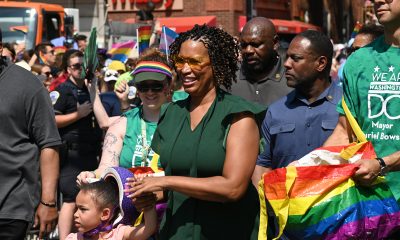
 District of Columbia4 days ago
District of Columbia4 days agoFinal push to raise funds, fill D.C. hotels as WorldPride nears
-

 El Salvador3 days ago
El Salvador3 days agoGay Venezuelan makeup artist remains in El Salvador mega prison
-

 District of Columbia4 days ago
District of Columbia4 days agoReenactment of 1965 gay rights protest at White House set for April 17
-
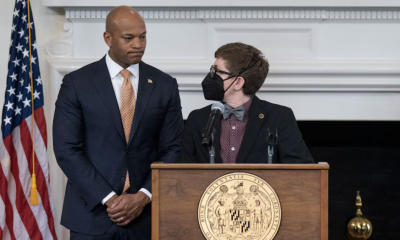
 Maryland4 days ago
Maryland4 days agoFreeState Justice: Transgender activist ‘hijacked’ Moore’s Transgender Day of Visibility event


